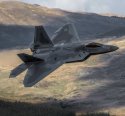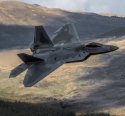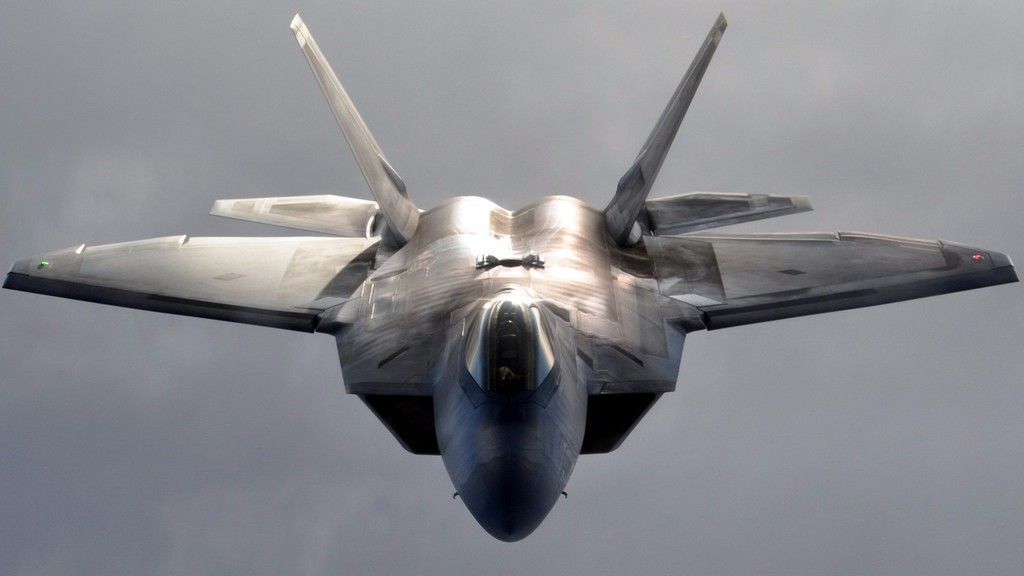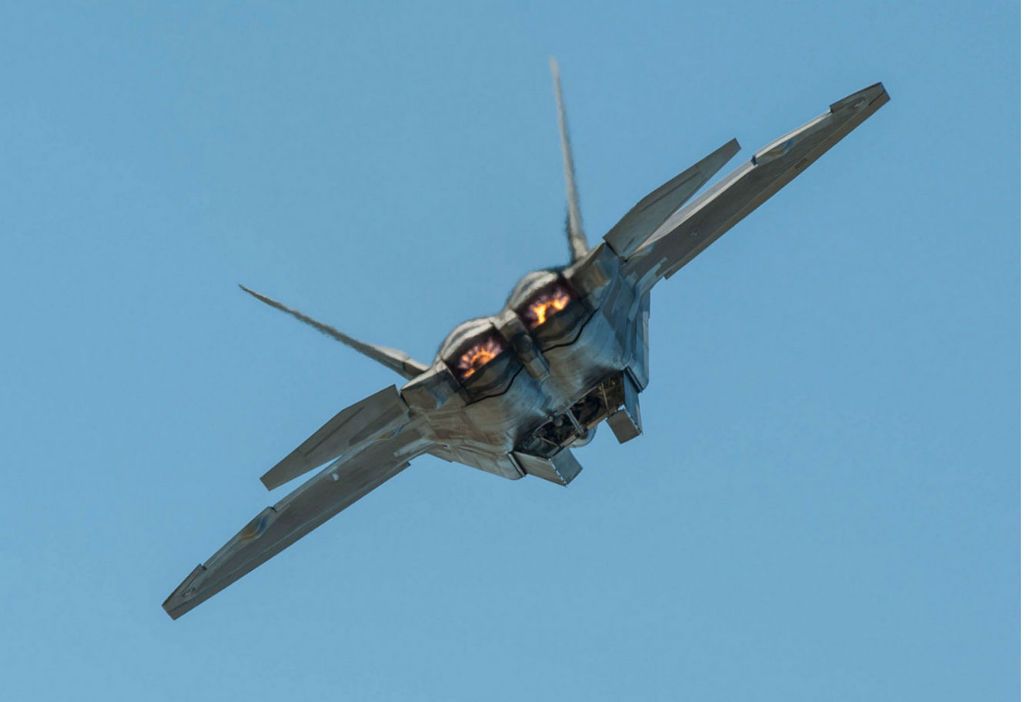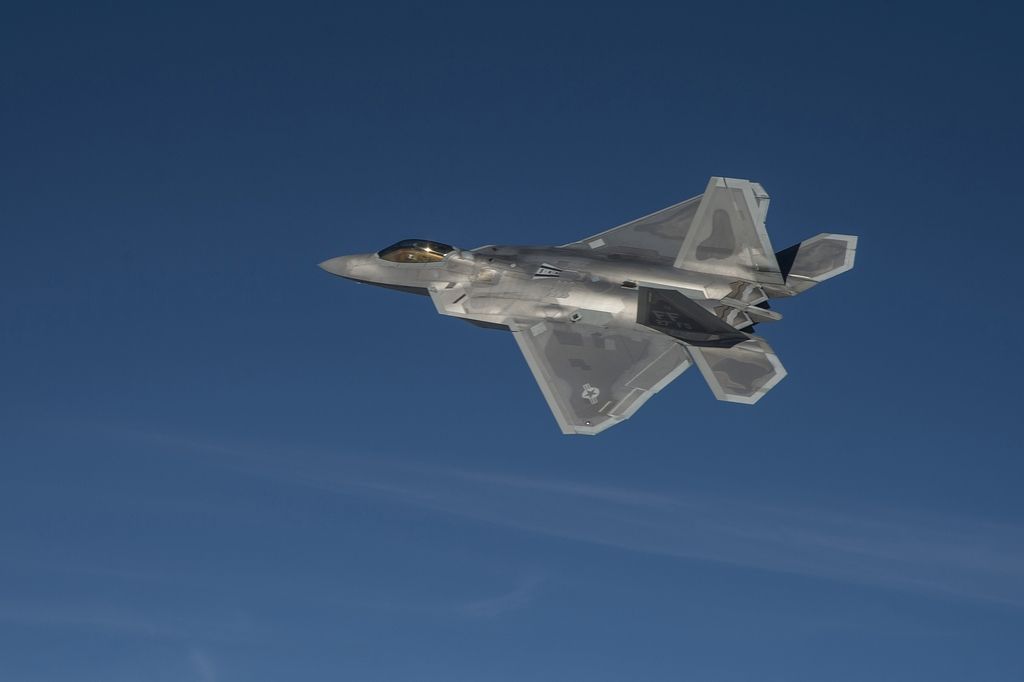You are using an out of date browser. It may not display this or other websites correctly.
You should upgrade or use an alternative browser.
You should upgrade or use an alternative browser.
F-22 Raptor Thread
- Thread starter Jeff Head
- Start date
Bernard
Junior Member
Technicaly completely possible restarting F-22 production line, build engines, machine Tools in a US Army depot and i have the key in more :=) jocking ofc for it
Butand some say a very bad idea, USAF must, need going for 6th generation more capable in 2030, coz at that time F-22 and even new updated are less capable vs new rivals.
(I know I was on vacation all weekend so probably way behind on the conversation)
But I have to disagree on this. Russia and China are both (from the looks of it) finally on their way to their first 5th gen planes and first ever attempts at mass producing stealth planes. But probably both another 10+ years to producing 200 together. While then we should have F-35 flying degugged and if our dreams come true and they pull some money out of thin air new build F-22's with HMD, wired with every weapon in the inventory and new weapons etc.
My point is I don't see any country (RUS, CHINA, US) capable economically to be producing 6gen fighter jets, in the next 15,20, 30, years(or going to war that doesn't turn nuclear). Or even enough of them to make a difference.
Keep R/D F-22 and F-35 into what you want on a 6gen into the next 30 years.
Brumby
Major
A couple of comments regarding human and machine pairing.
Firstly, there are six key technological emphasis as part of the road map on unmanned vehicles as outlined by the US Department of Defence (DOD). Autonomy is just one of the six.

There are a bunch of regulatory issues, compliance and technical hurdles to introduce some sort of autonomous vehicle. As an example, there are eight functions required to undertake self separation function.

Whilst there is a roadmap, the road ahead is still very long and winding towards full autonomy.
Secondly, the notion of human machine pairing and the inevitable conversation towards some form of traditional air to air combat as a primary tool is a narrow view of future utility of man/machine matrix. IMO, we need to see such a pairing in the context of a kill chain in the future battlespace. Some of the mission task I see could be :
(a) Extended weapons load carrier
(b) Expanded sensor net in the from of L band frequencies against 5th generation targets
(c) Deep penetrating vehicle too risky even for 5th gen platform
(d) Disruptive asset in electromagnetic spectrum warfare
(e) Conduct deep ISR function
How is this connected to the F-22 program? I think if you look at the key attributes necessary to operate in a dense environment for machine/human pairing , some of the key features needed such as stealth, SA, sensor fusion flight formation and secured LPI communication links are only present in two platforms, the F-22 and F-35.
Firstly, there are six key technological emphasis as part of the road map on unmanned vehicles as outlined by the US Department of Defence (DOD). Autonomy is just one of the six.
There are a bunch of regulatory issues, compliance and technical hurdles to introduce some sort of autonomous vehicle. As an example, there are eight functions required to undertake self separation function.
Whilst there is a roadmap, the road ahead is still very long and winding towards full autonomy.
Secondly, the notion of human machine pairing and the inevitable conversation towards some form of traditional air to air combat as a primary tool is a narrow view of future utility of man/machine matrix. IMO, we need to see such a pairing in the context of a kill chain in the future battlespace. Some of the mission task I see could be :
(a) Extended weapons load carrier
(b) Expanded sensor net in the from of L band frequencies against 5th generation targets
(c) Deep penetrating vehicle too risky even for 5th gen platform
(d) Disruptive asset in electromagnetic spectrum warfare
(e) Conduct deep ISR function
How is this connected to the F-22 program? I think if you look at the key attributes necessary to operate in a dense environment for machine/human pairing , some of the key features needed such as stealth, SA, sensor fusion flight formation and secured LPI communication links are only present in two platforms, the F-22 and F-35.
Hyperwarp
Captain
F-22 on its way to Romania. CNN has some nice Hi-def footage from the tanker.
Oh la la ! look this stuff down low in the UK " dudes " 
And confirmed 12 big Detachment, 2 today in Lithuania
With bodyguards !
And confirmed 12 big Detachment, 2 today in Lithuania
Here is some twilight action from RAF Lakenheath of the resident F15 Strike Eagles of the USAF, and their distinguished visitors from the US flying the mighty Lockheed Martin F22a Raptor.
With bodyguards !
Last edited:
Jura The idiot
General
found in Twitter (picture taken in the UK most recently):


found in Twitter (picture taken in the UK most recently):

The "Alien Bird" and the "Mother Ship", picking up a little "moon dust" in order to maintain her "stealth and super cruise" capabilities. Jura this prolly should NOT have been published bruda, although honestly there is NO WAY the Chinese or the Ruskies can copy this?? no way! Q7?
although I should confess that is a "beautiful picture", kinda of catches her "essence" doesn't it. To others I would encourage you to "look" at the Raptor's wing, has an "organic curve" as viewed from the frontal aspect, no doubt one of Raptor's many secrets to very high lift at very low airspeeds. This girl will likely NEVER be duplicated by anyone on this planet?? NEVER, Never?? its all organic, all the time.
Last edited:

